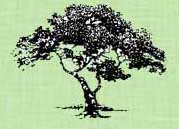Home
Ask the Arborist: Garden Practices that Harm Oaks
Question: Can common garden practices be ‘the root of all evil (or almost all evil) that afflict our magnificent large trees and in particular our native California oaks?
Answer: Our history of extensive garden making with native California oaks is relatively short – thirty to forty years. This period represents about a tenth of the longevity an oak tree can achieve. The passage of time is now making apparent damage caused by common garden practices. Images of the day include the lush green lawn, extensive patio and plants that offer up perpetual color (azaleas, camellias, impatiens, fuchsias and rhododendrons to name a few) under the protective shade of the oak tree. We have been fooled by the natural resilience of native California oak trees to pests and diseases. Evidence of tree health problems can take from a couple of years to decades for a tree to show – and once a tree starts to show what we perceive as evidence of decline it is often too late.
Left undisturbed native California oaks (trees that over thousands of years adapted to cool wet winters, dry summers) are long lived and can develop magnificent forms. Garden making often involves altering soil conditions – and it is the alteration of the soil conditions that is the single greatest cause of root damage. Maintaining favorable soil conditions under the tree canopy – the most critical area being within 10 to 15 feet of the tree trunk is fundamental to maintaining tree health (See Sketch #1). Unfavorable alterations of soil conditions include:
- Soil compaction by having machinery, vehicles and the storage of materials under the tree canopy and /or introducing fill soils.
- Drainage pattern changes.
- Soil level changes.
- Building paved areas under the tree canopy.
- Trenching.
- Tilling.
- Removing organic matter (leaf litter).
- Planting plants that require frequent summer water.
- Planting and/or paving within 10 to 15 feet of the tree trunk.
Soil compaction, raising soil levels building paved areas and frequent summer watering are the most difficult conditions for a tree to adapt to. These conditions deplete one of the most important components for a healthy root system – oxygen. Root systems die without sufficient oxygen - and when tree root systems die – so does the tree.
Frequent summer water displaces oxygen and creates warm moist conditions - conditions that promote the proliferation of common root pathogens (most root pathogens are dormant in warm dry conditions and cool conditions). Roots at the base of the tree are the most susceptible to disease. Our desire to be right next to the tree is often a mixed blessing for the tree.
Common building practices for patios, driveways, walkways and walls inevitably result in compacted soil conditions, root tearing and significant reduction in available winter water (winter water is necessary).
Garden making in oak environments is not the root of the problem to the evident decline in oak tree health – the problem lies in how we make the gardens. Altering how we make gardens requires practical measures and exploring artful aspects of garden making.
Simple measures and explorations include:
- Keeping the critical area (See Sketch #1) free of machinery, vehicles and storage. This is especially true during the winter months – when the soil is wet.
- Grading in areas other than those under the tree canopy.
- Selecting plants that require little summer water (the list is extensive and includes plants that will give the vision of the lush lawn under the shade of the grand old tree). ****
- Building patios, walkways, driveways and walls with alternative methods and materials – methods and materials that allow:
- Oxygen exchange in the soil by reducing required soil compaction, and
- Water infiltration during the winter months.
Some of the methods and materials have been successfully used for thousands of years – some are currently emerging. Some of the newer methods include: using structural soil (a mixture of soil and crushed rock – a combination that allows for oxygen exchange under compacted conditions) and other methods include suspending patios and walkways rather than basing them directly on the soil.
- Consider the use of sculpture, light, projected images rather than paving or plant material under the canopy area – imagine the beauty of a mobile that flouts in the canopy of a tree - the possibilities are endless.
Creating positive conditions for oak trees requires maintaining oxygen and nutrients in the soil, infrequent summer water and sensitive creative construction techniques. By no means should these conditions be considered limitations to making a garden. Artful garden making involves a respectful ordering of nature in a positive way. Understanding the dynamics at work in a particular site and using this understanding in a positive way are keys to this art – many paradises are possible under the protective canopy of the oak tree.
